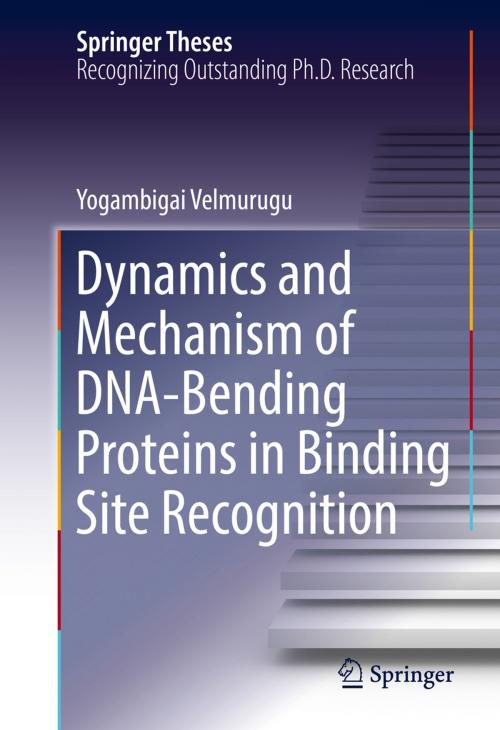Dynamics and Mechanism of DNA-Bending Proteins in Binding Site Recognition
Nonfiction, Science & Nature, Science, Physics, Spectrum Analysis, Biological Sciences, Biophysics| Author: | Yogambigai Velmurugu | ISBN: | 9783319451299 |
| Publisher: | Springer International Publishing | Publication: | November 29, 2016 |
| Imprint: | Springer | Language: | English |
| Author: | Yogambigai Velmurugu |
| ISBN: | 9783319451299 |
| Publisher: | Springer International Publishing |
| Publication: | November 29, 2016 |
| Imprint: | Springer |
| Language: | English |
Using a novel approach that combines high temporal resolution of the laser T-jump technique with unique sets of fluorescent probes, this study unveils previously unresolved DNA dynamics during search and recognition by an architectural DNA bending protein and two DNA damage recognition proteins.
Many cellular processes involve special proteins that bind to specific DNA sites with high affinity. How these proteins recognize their sites while rapidly searching amidst ~3 billion nonspecific sites in genomic DNA remains an outstanding puzzle. Structural studies show that proteins severely deform DNA at specific sites and indicate that DNA deformability is a key factor in site-specific recognition. However, the dynamics of DNA deformations have been difficult to capture, thus obscuring our understanding of recognition mechanisms.
The experiments presented in this thesis uncover, for the first time, rapid (~100-500 microseconds) DNA unwinding/bending attributed to nonspecific interrogation, prior to slower (~5-50 milliseconds) DNA kinking/bending/nucleotide-flipping during recognition. These results help illuminate how a searching protein interrogates DNA deformability and eventually “stumbles” upon its target site. Submillisecond interrogation may promote preferential stalling of the rapidly scanning protein at cognate sites, thus enabling site-recognition. Such multi-step search-interrogation-recognition processes through dynamic conformational changes may well be common to the recognition mechanisms for diverse DNA-binding proteins.
Using a novel approach that combines high temporal resolution of the laser T-jump technique with unique sets of fluorescent probes, this study unveils previously unresolved DNA dynamics during search and recognition by an architectural DNA bending protein and two DNA damage recognition proteins.
Many cellular processes involve special proteins that bind to specific DNA sites with high affinity. How these proteins recognize their sites while rapidly searching amidst ~3 billion nonspecific sites in genomic DNA remains an outstanding puzzle. Structural studies show that proteins severely deform DNA at specific sites and indicate that DNA deformability is a key factor in site-specific recognition. However, the dynamics of DNA deformations have been difficult to capture, thus obscuring our understanding of recognition mechanisms.
The experiments presented in this thesis uncover, for the first time, rapid (~100-500 microseconds) DNA unwinding/bending attributed to nonspecific interrogation, prior to slower (~5-50 milliseconds) DNA kinking/bending/nucleotide-flipping during recognition. These results help illuminate how a searching protein interrogates DNA deformability and eventually “stumbles” upon its target site. Submillisecond interrogation may promote preferential stalling of the rapidly scanning protein at cognate sites, thus enabling site-recognition. Such multi-step search-interrogation-recognition processes through dynamic conformational changes may well be common to the recognition mechanisms for diverse DNA-binding proteins.















